This dinner roll recipe took Chef Rachel Farnsworth over 5 years of testing to develop. It has since been enjoyed by millions of people around the world with thousands and thousands of rave reviews, heralded as the best dinner rolls on the internet. In addition to being published in her best-selling cookbook The Stay At Home Chef Family Favorites, this dinner roll recipe is used in restaurants and bakeries around the world. And now, it’s all yours!
Why Our Recipe
- Tried and true recipe for soft, fluffy, buttery dinner rolls worthy of a bakery every time.
- This recipe works for any skill level. Use a stand mixer or knead by hand.
- Make ahead instructions and freezer instructions included!
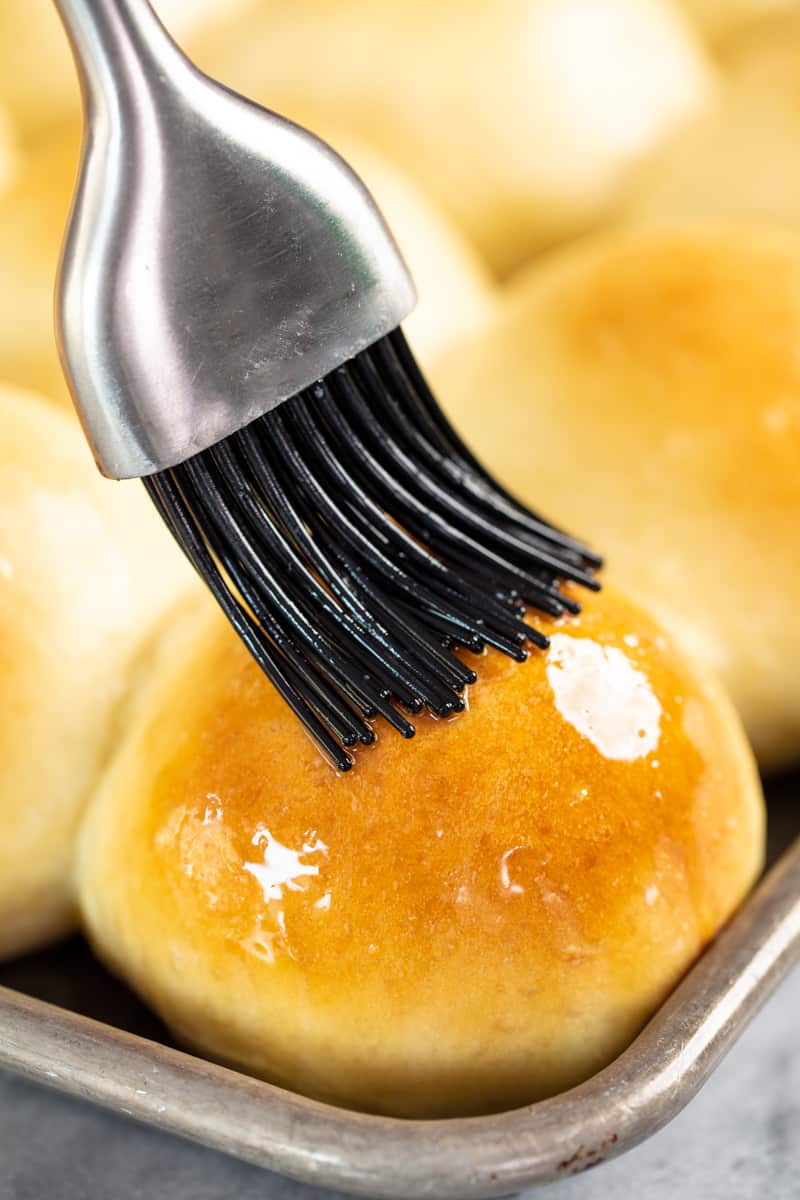
Whether you are new to bread making or an experienced baker, this recipe is sure to please. These homemade dinner rolls deliver bakery-quality results every single time. Whether you’re a seasoned baker or a beginner, this recipe has you covered. Use a stand mixer for convenience or knead the dough by hand if you prefer a more hands-on approach. You’ll get pillowy soft melt-in-your-mouth perfection either way!
Ingredient Notes
- Warm Milk: Make sure the milk is between 100°F to 110°F. Heat it on the stove or in the microwave. Use a thermometer for accuracy or test with your finger—it should feel warm but not hot. Use whole milk, 2% or 1% for best results. Skim and dairy milk alternatives can also work.
- Instant Dry Yeast: Instant yeast doesn’t need to be activated beforehand. If you only have active dry yeast, adjust the rising times slightly as noted in the instructions.
- Granulated Sugar: Yup, just regular old sugar. Brown sugar can also be used if you want to add in that hint of molasses.
- Salt: Stick with standard table salt for accurate measurements.
- Salted Butter: Make sure you use softened butter so it mixes in to the dough. If you only have unsalted butter, add an extra pinch of salt.
- Eggs: Grade AA large eggs will do.
- All-Purpose Flour: Start with 5 1/2 cups and gradually add more as needed. Bread flour can be used in the same amount for a slightly chewier texture, using the same amount.
- Melted Butter: Brushed on after baking for a shiny finish and buttery flavor.
No stand mixer? No Problem!
You can knead your dough by hand! Start out by stirring with a spoon until it becomes too difficult to stir. Turn the dough out onto a clean surface and knead it with your hands, gradually adding in more flour and folding, pressing, and working the dough (kneading) until you have a soft and smooth dough ball that is tacky, but not sticky enough to stick to your hands.
Active Dry Yeast Vs Instant
Instant dry yeast can be added straight to dry ingredients and doesn’t require any waiting period or proofing. It also rises a bit quicker. Active dry yeast is a bigger size of granule and generally needs to be dissolved in a liquid before adding to a recipe. It activates a bit slower so expect 10-15 minutes extra in rising time.
Go by Feel
The exact amount of flour you add in bread making can vary a great deal so it’s important to go by feel. I like to say you can feel a soft roll just by touching the dough. The dough should be smooth and slightly tacky, but still very soft and pliable. If it is sticking to your hands or the sides of the bowl, you need more flour. If you add too much flour and the dough stiffens, your rolls will also get a little stiff so always add additional flour a small amount at a time.
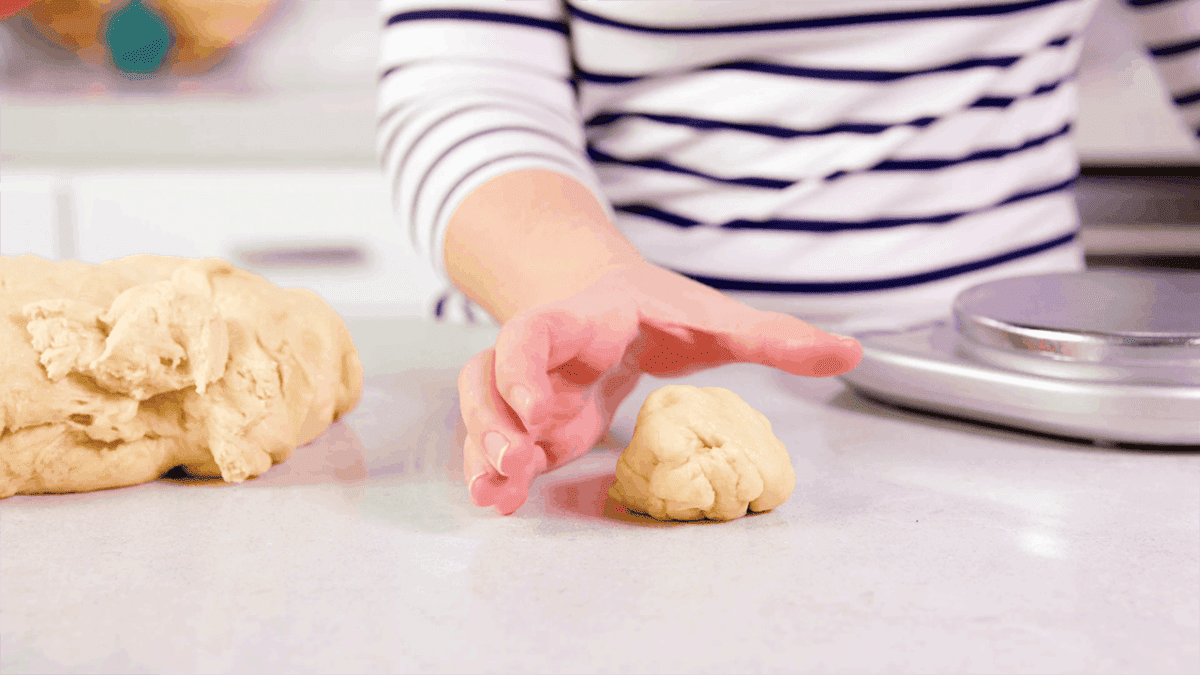
Pro Tip: Equal Size Rolls
The best way to ensure that your rolls are equal in size is to weigh them. Weigh the entire batch of dough using a kitchen scale and divide that weight by 24. This will give you your target weight for each roll. Usually, this is somewhere around 2.5 ounces.
Shaping Rolls
Once you have your dough divided into 24 pieces you can shape your rolls. Place your hand into a cupping shape parallel to a clean countertop. Place the dough ball between the palm of your hand and the countertop. Roll the dough in a circular motion between your palm and the countertop for approximately 30 to 45 seconds until you have a smooth, round ball.
Measuring Flour
The flour you buy at the store these days is generally pre-sifted. There is no need to sift your flour. I prefer the scoop and sweep method as it is ultra-convenient. Simply give your flour a fluff, use your measuring cup to scoop out the flour, and level off the top. Weighing your flour using a kitchen scale is the only way to ensure complete accuracy. Even then, bread making is both fickle and forgiving and the actual amount of flour you add can change just due to the humidity in the air. When making this roll recipe, it is best to go by the touch and feel of the dough. 1 cup of flour is approximately 125 grams.
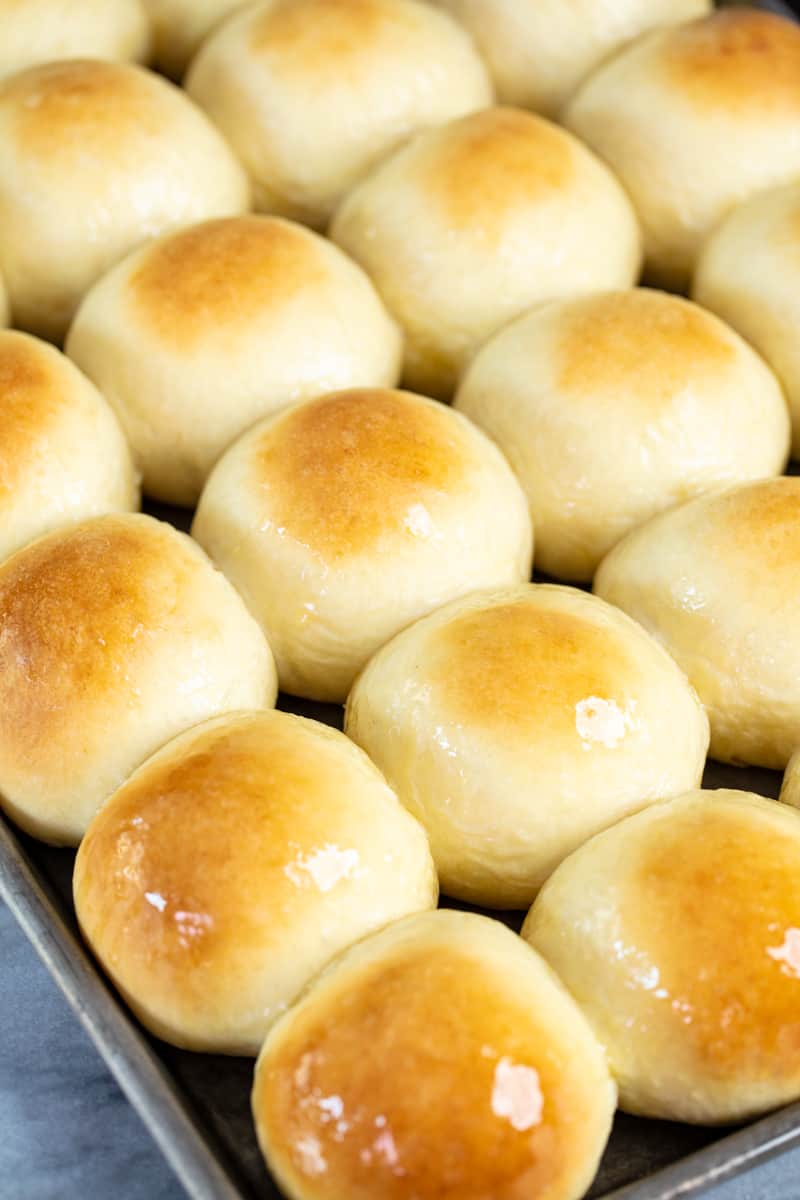
Freezer Instructions
You can freeze dinner rolls for later baking immediately after you shape them into rolls. When ready to eat, remove them from the freezer and allow to thaw and produce their second rise until double in size before baking. This can take anywhere between 1 to 2 hours, depending on the temperature in your home.
Make-Ahead Instructions
Need to make your dough ahead of time while you are busy doing other things? Make your dough as directed and let it rise for the initial 90 minutes. Shape the dough into rolls and place them on your baking sheet. Instead of letting them rise for an additional 60 minutes, cover the shaped rolls with plastic wrap and place the pan directly into the refrigerator. While it doesn’t stop it completely, the cool temperature of the fridge will slow the growth of your yeast. Your rolls will only rise slightly while refrigerated and you can hold them this way for up to 24 hours.
When ready to bake, remove them from the fridge and allow the rolls to rise at room temperature while your oven preheats, about 30 minutes. Continue to bake as directed.
Storage Instructions
Store in a plastic bag or airtight container at room temperature for up to 72 hours.
More perfect bread recipes…
Best Homemade Cinnamon Rolls Ever
2 hrs 14 mins
Ultimate Guide to Homemade Bread
3 hrs 25 mins
Homemade Breadsticks
1 hr 18 mins
Watch the video below where Rachel will walk you through every step of this recipe. Sometimes it helps to have a visual, and we’ve always got you covered with our cooking show. You can find the complete collection of recipes on YouTube, our Facebook Page, or right here on our website with their corresponding recipes.

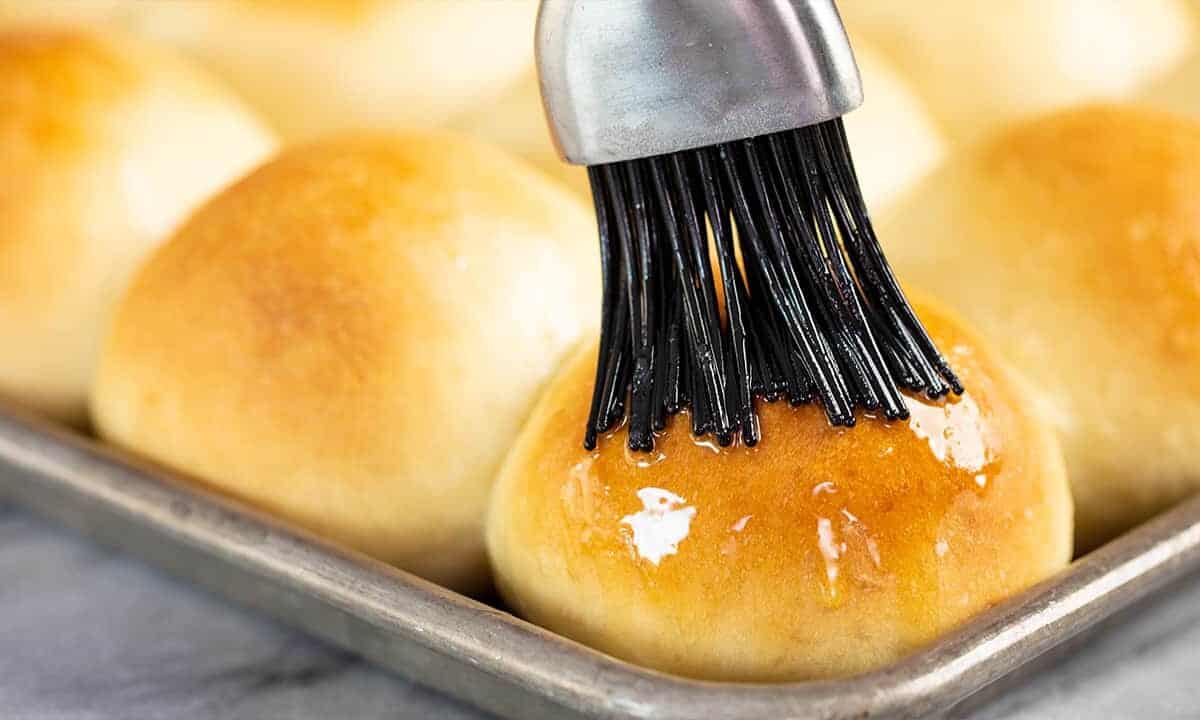
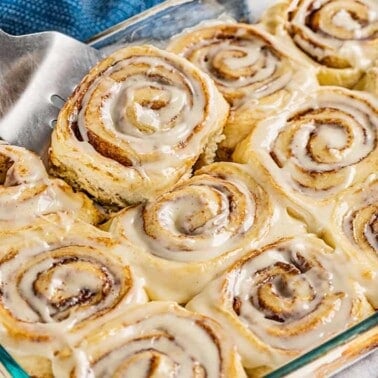
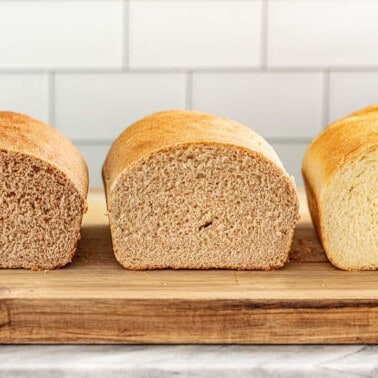
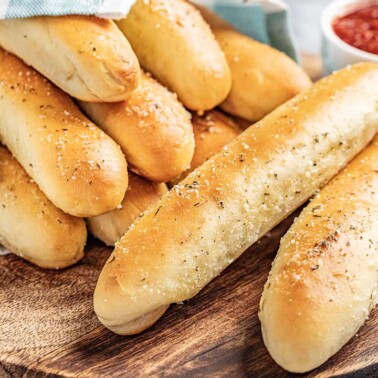
Can you or has anyone tried to use this recipe for bread?
Hi, Thankgsiving 2016 here
I am making these, the dough is so sticky and I have added at least a whole extra cup of flour to it…The dough is rising well, and I have just put blobs of it in a baking pan, and waiting for it to finish prooving…
I am looking forward to tasting these rolls… just hope i haven’t messed them up by doing something wrong… 🙂
Can I make these early and just refrigerate them after second rise and take them out shortly before baking.
You can substitute and one for one flour thats gluten free like Cup4Cup and it will work. She is very wrong about this and I think she’s rather rude telling people not to bother! I have made plenty of things that use yeast with this flour and have gotten very moist and fluffy results. I SAY DON’T LISTEN TO HER AND USE THE FLOUR IVE MENTIONED! I was glad when I found it and in fact I keep at least 4 of the large bags at all times in my pantry.
I stand by my original statement that this recipe wasn’t designed to be gluten free. Thank you for sharing what worked for you. Gluten free baking is very specific and because I have no tested the hundreds of different gluten free flours with this recipe, I cannot vouch for any of them. Even with your substitution, I still can’t vouch for how they turned out. When you call something The Best Homemade Rolls Ever, you can’t expect substitutions to live up to the original.
Hi Rachel
I have never made buns before. I made these in my kitchen aid (just got one for christmas and love love love it). This recipe was so easy to follow and make. The buns were perfect, absolutely delicious. In fact I took one to my mother in law, who has made home made rolls for over 50 years. (She has made them to give to many many friends over the years) She said they were very very good, in fact better than hers! That was a compliment and a testament to your recipe. I substituted the sugar for splenda as I am a recently diagnosed diabetic and she could not tell the difference. Very enjoyable. Thank you for sharing! I will try your other recipes too!
God bless you for your patience with the comments and questions. I just wanted to say I love your recipe. Baking is an art. Not a science….to all that are interested. Every time I make them the amount of flour varies with the weather. That;s just the nature of the beast. I have made these many time and love them. BTW. You can freeze them. When completely cooled, place in zip lock back and freeze. When ready to use, pull from bag, wrap in foil and put them in oven at 425 for 10 minutes or so and then unwrap and brush with butter again. Nom, nom, nom!!! Making a batch for thanksgiving tomorrow and will be the hero of the day!
This year I am responsible for brining dinner rolls for Thanksgiving. My family has always purchased dinner rolls for the big day, but I felt compelled to try to make some this year, as I wasn’t making any other dishes to contribute. I tried a recipe last night and made some very nice bread-like hockey pucks. My four year old, who literally eats everything, told me they were NOT good. I vowed to try again today after seeing your recipe pop up on my Facebook feed. I do not have a stand mixer, I am not good at measuring precisely, and I only had skim milk. It didn’t matter. The rolls rose beautifully, cooked nicely, and rival any rolls I have bought at the store. These will definitely be making a Thanksgiving appearance this year. Thank you!
How many ounces should each roll be?
Mine are about 2.4 to 2.5 ounces.
If I make this dough the night before, and let it rise overnight in the refrigerator, would it still rise again once I pound out the rolls?
Just made a batch but forgot the eggs. Is it ruined?
Will it be a problem if i left the dough to rise more than 90 minutes , may be three hours instead ? I would like to prepare it go out then come back and bake it ..
If it is okey do i keep it room temperature or keep it cooled in the refrigerator? ?
Thanks a lot
If you let dough rise too long it will deflate.